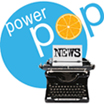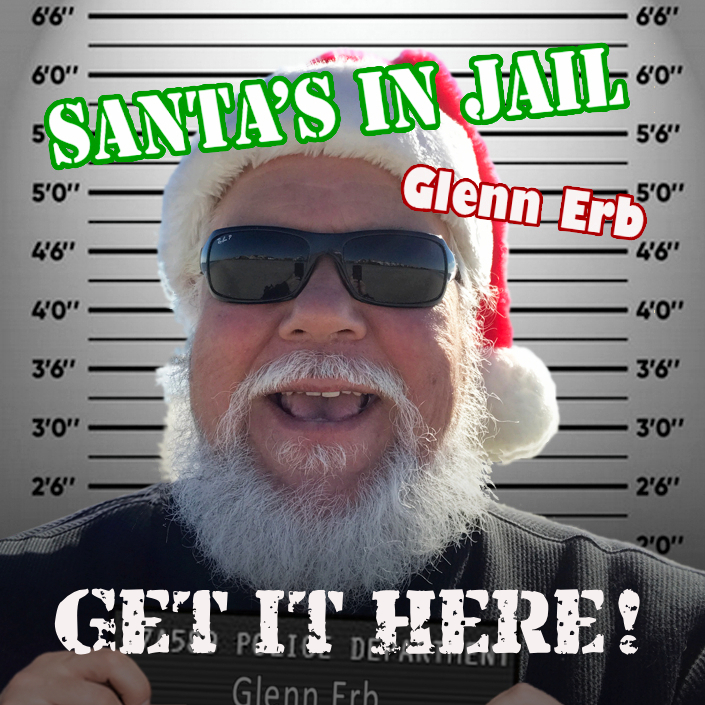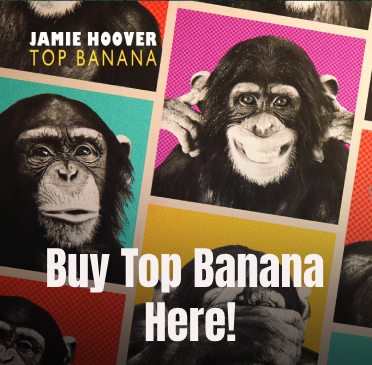Power Pop Bands
“So what’s power pop?”
I can’t tell you how many times I’ve heard that question. Here is my definition, both short and to the point: Power pop is melodic, guitar driven music boiled down to its most basic and appealing parts. It’s all hook and no fat.
I might also add that vintage powerpop songs often feature ringing or chiming guitars, pleasing harmonies, short or no solos – and they quite often time in at 3 1/2 minutes or less.
Power pop music has elements of rockabilly, pop, Mersey beat, doo-wop, and bubblegum, but it only really started to jell as its own genre in the late ‘70’s. Still, the power pop sound is rooted in artists such as Badfinger, The Byrds, Beatles, Beach Boys, The Move and perhaps most profoundly, The Who.
Early Power Pop Bands
While there are varying opinions on the matter, many would cite Cleveland’s The Raspberries as one of the first real power pop artists of significance. Their classic radio-friendly single, “Go All The Way”, made The Raspberries the first power pop band to get significant airplay as well as the attention of the mainstream music listener. Others may point to Badfinger as the first. As far as the term itself, it was first coined by Pete Townshend to describe the style of his band, The Who.
Big Star – Arguably the Most Influential of All Power Pop Bands
There may be no more influential work than Big Star’s first release entitled #1 record – with the possible exception of Radio City, their second album. Alex Chilton and Chris Bell were the McCartney and Lennon of power pop, writing songs that still sound relevant today even though they were created 40 years ago. In my opinion, “September Gurls” is as beautiful as any song I have ever heard and has been covered countless times by a countless number of admiring artists. The song was rated as the 180th best song ever recorded by Rolling Stone and has been covered by countless bands, most notably hit-makers The Searchers, The Bangles and Superdrag. Even Katy Perry recorded a tribute to the band entitled “California Gurls” in 2013.
In 2012, filmmaker Drew DeNicola write and directed an acclaimed documentary about the band entitled Big Star: Nothing Can Hurt Me, telling the band’s incredible story and lending even more credence to the mystery and legend that was Big Star.
Badfinger – Arguably the Most Successful of the Early Power Pop Artists
Badfinger seemed destined for stardom from the very start. Originally formed as The Iveys, they were the first band signed to The Beatles’ Apple Records in 1968. Shortly after changing their name to Badfinger (John Lennon wanted them to name the band Glass Onion), the band had a hit with the Paul McCartney penned “Come and Get It” (1970). Over the next several years, they’d have hits with “No Matter What”, Day After Day” and most notably, the power pop standard “Baby Blue”.
How good was Badfinger? The late, great Harry Nilsson chose to cover Badfinger’s “Without You”. When a songwriting genius chooses to record your song, it should be all the validation anyone needs.
What should have been a long and prosperous career ended as so many music careers do – with a single event triggering a domino effect of successive tragedy. The nature of these tragedies run the gamut from financial to personal (suicide).
The Badfinger story is so tragic and ultimately compelling that several documentaries have been made about the band. This is a great one:
The Nerves – The First of the Great DIY Power Pop Bands
Before there were indie acts, self-produced and distributed records or home recording, there was The Nerves. Paving the way for many of the power pop bands that would follow, The Nerves (Peter Case, Paul Collins and Jack Lee) would tour and perform without a contract from a major label. While Blondie would have a hit with the Jack Lee composition “Hanging on the Telephone”, Peter Case and Paul Collins would have a much greater impact on the genre.
After a very short stint, The Nerves would break up with Case and Collins forming The Breakaways and later branch off into their own power pop bands where each would make their distinctive mark. Collins and his band, The Beat, had hits with “Rock n Roll Girl” and “All Over The World” and then do exactly that – tour all over the world. Case’s band, The Plimsouls would have success with the hit song “Million Miles Away” and appearances in films such as 1983’s “Valley Girl”.
Peter Case would go on to have a long career spanning several genres and is best known for having been nominated for Grammys three different times in the Americana category.
The first band I really loved (other than the Beatles), Cheap Trick, is generally considered the next great power pop band to come along. Their 1979 Live at Budokan album was a smash hit along with some of the most memorable singles of all time including “I Want You to Want Me”, “Surrender”, and later, “Dream Police”. The girls loved Robin Zander (and could he ever sing!) and Rick Neilson had a knack for writing middle class, anthems that can only be described as teenage masterpieces.
Power Pop Music’s Biggest Hit
No overview of the genre and its bands would be complete without mentioning The Knack. Not only they vital sounding, they had marketing genius behind them. I remember buying their debut LP , Get The Knack, without having actually heard the band before (they weren’t in rotate on any east coast radio stations) as the cover reminded me slightly of Meet The Beatles.
Written about a girl who attended his shows – one he would soon have a long and complicated relationship with – Doug Fieger’s “My Sharona” would set the world ablaze, spending six weeks atop the Billboard Hot 100 singles chart and having the distinction of being named the #1 song on Billboard’s 1979 end of the year top singles chart. Bruce Gary’s stuttering beat, Burton Averre’s magnificent rig and blistering solo, and Fieger’s urgent delivery make this song simply too good to resist.
The Knack went on to record right up until Fieger’s death in 2011. Their body of work was outstanding, albeit somewhat inconsistent as they also had Billboard hits with “Good Girls Don’t” (#11), “Baby Talks Dirty” (#38), and “Rocket of Love” (#9).
It seems every power pop band has one criminally overlooked record and for The Knack, that record was their 1998 LP entitled Zoom. While critically acclaimed (John Borack called it a “stunning effort”), it didn’t sell. Perhaps Trouser Press writers (who also liked the record) were right when they said that the band was “caught in a dead zone” between nostalgia and irrelevance.
What Single Song is Most Associated with Early Power Pop Music?
Every genre has a flagship song and that certainly is the case with Power Pop. While The Knack may have had powerpop’s biggest hit to date in “My Sharona”, The Records’ 1979 single “Starry Eyes” would become the song most indicative of the genre’s sensibilities. While the single peeked at #56, the album from which it came would nearly break the top 40, coming in at #41. Entitled “The Records” in the US (“Shades in Bed in the UK) the disc featured “Starry Eyes” as well as some lesser hits such as “Teenerama” and “All Messed Up and Ready”. “Starry Eyes” would be featured in several future compilations, eventually being featured in a Rhino Records retrospective of the genre entitled “DIY Starry Eyes; UK Pop 2 (1978-79).
These Power Pop Bands Should Have Been Huge…
Among the earliest powerpop bands, there were several that should have been big but due to various circumstances not uncommon pt the industry, things didn’t work out. Big Star would have headlines this category except, over time, they’ve attained a good bit of notoriety. North Carolina’s dB’s put out some great records, The Toms put out two great records no one has ever heard and then 20/20’s debut was simply awesome. But for my money, there was no better band in that time than Seattle’s The Heats.
The Heats released only one proper record for the Albatross label, owned and run by the Wilson sisters from the mega-popular band Heart. When the parent label dropped Albatross and severed distribution channels, their fate was cast. The band dissolved quickly but not before taking the Northwest by storm.
Powerpop’s heyday is generally considered to be this early period from 1978 into the early 80’s. Some of the more influential bands of that time (not mentioned above) include: Emmit Rhodes, Flamin’ Groovies, 20/20, Dwight Twilley Band, Bram Tchaikovsky, Shoes, The Flashcubes, Pezband, The Romantics, The Smithereens, The dBs and Nick Lowe. There are many more I could have included so feel free to add your favorite in the comment field below.
Power Pop in the 90’s and Beyond
There were a plethora of fine power pop bands in the 90’s as well. In the Midwest, you had The Blow Pops (Milwaukee) and their two jangly masterpieces American Beauties and Charmed, I’m Sure. Jeff Murphy of Shoes (Zion, Illinois) produced those records, of course. Chicago’s Material Issue put out three outstanding albums before Jim Ellison’s untimely death. They include International Pop Overthrow, Destination Universe, and Freak City Soundtrack. The name of the first of these would be borrowed by David Bash for his annual power pop festival. One hit wonders The Beatifics gave us How I learned To Stop Worrying.
Meanwhile, New Jersey had power pop hit makers The Smithereens. They hit the top 20 charts several times with songs such as “Only A Memory”, “A Girl Like You” and “Blood and Roses”. There was a great underground scene too, with bands like Evelyn Forever and Copperpot. But it was Fountains of Wayne and “Stacy’s Mom” that dominated radio for almost a year.
Seattle had Super Deluxe. LA had Redd Kross. San Francisco had Jellyfish and their two stellar albums, Bellybutton and Spilt Milk. North Carolina had The Spongetones and The dB’s.
And Swindon gave us XTC, very possibly the best of the bunch. Power Pop was in good stead.
Fast Forward to Today
Power pop is nearing its 50th birthday. The last two decades have seen its star fade considerably. Even so, melodic, guitar driven pop lives on. The purpose of this blog is to hip you to the folks who are still creating timeless power pop. Do yourself a favor and check out great bands such as The Glad Machine, The Amplifierheads, Nick Piunti, Sloan, Sun Sawed in Half, The Yum Yums, The Weeklings or Airport 77’s. Today’s great songwriters include Seth Swirsky, Eytan Mirsky, Greg Pope, David Myhr and Bill Lloyd. They’re all worth your time and money. Read about them here. And please, support them wherever they go.
One final note: This is a grossly abbreviated, high-level overview of the power pop landscape and the bands associated with the genre. John Borack’s book “Shake Some Action: The Ultimate Power Pop Guide” is every bit that – the ultimate guide and is highly recommended.




